Altcoins
What are Altcoins? 7 Different Types with Examples
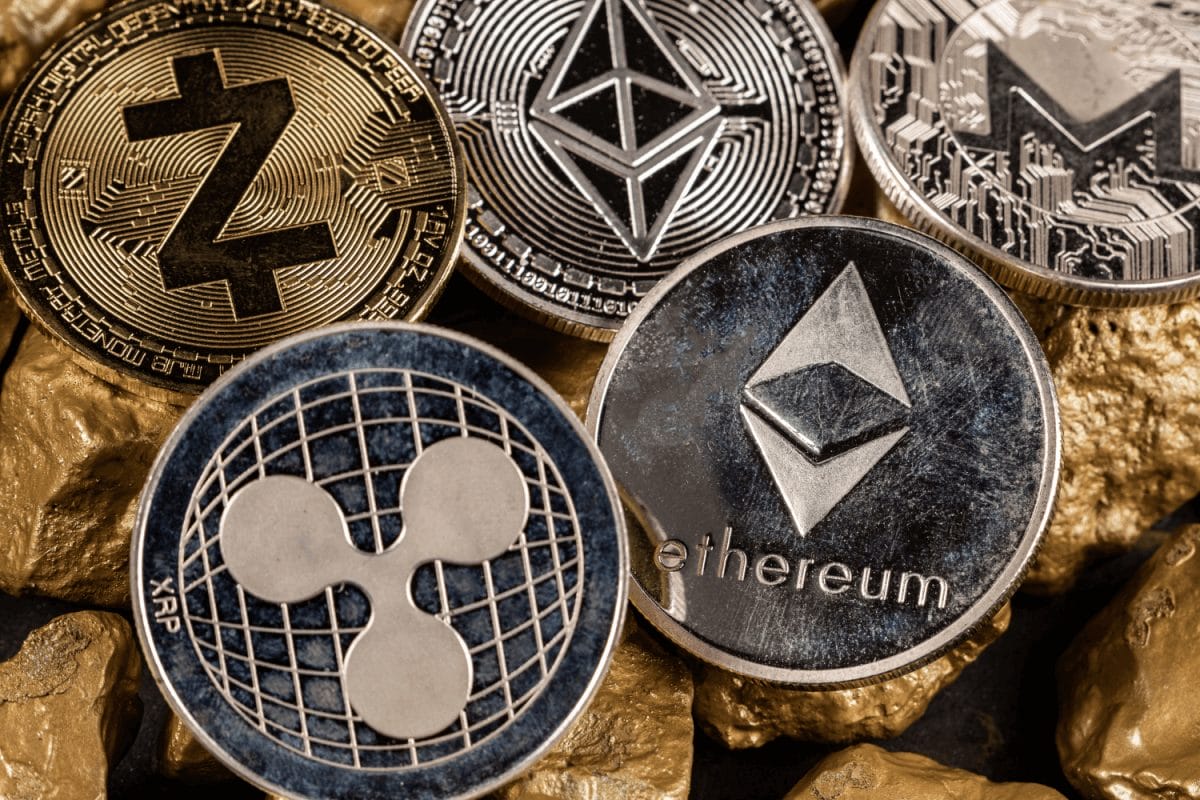
Last updated:
March 7, 2024 04:56 EST
| 12 min read

Almost all of today’s cryptocurrencies are altcoins, but what are altcoins? An altcoin — or alternative coin — refers to any cryptocurrency besides Bitcoin.
However, many see altcoins as any cryptocurrency besides the big two, Bitcoin and Ethereum, which together comprise over 70% of the crypto market value. Altcoins encompass thousands of other cryptocurrencies, many of which aren’t as obscure as the term altcoin might suggest.
At the time of writing, Solana, a leading altcoin, boasts a $58 billion market capitalization. Ripple (XPR), another altcoin with a devoted community, has a total market value of nearly $36 billion. Each has made scores of altcoin millionaires throughout their meteoric rise.
In this guide, we’ll discuss seven types of altcoins and how they fit into a growing cryptocurrency market. First, let’s discuss how altcoins came to be and some of the earliest examples.
Altcoins Explained: Alternatives to Bitcoin
In the beginning, there was Bitcoin, the first cryptocurrency to achieve viability. By the most commonly used definition, all other cryptocurrencies are altcoins, including Ethereum, which is the second largest crypto by market cap. They’re usually used as alternatives to Bitcoin and fiat money.
Today’s top altcoins include the following:
- Ethereum (ETH): Ethereum brought improved support for smart contracts, which are computer programs that run on the blockchain.
- Tether (USDT): The Tether token is pegged to the value of the US dollar and remains one of the most popular stablecoins.
- BNB (BNB): Launched by Binance, the world’s largest crypto exchange, BNB is the token for the BNB Smart Chain (BSC).
- Solana (SOL): The Solana network is known for speed, with up to 65,000 transactions per second. The SOL token powers the network.
- Ripple (XRP): The XRP coin is the native cryptocurrency of the Ripple network.
- USDC (USDC): Like USDT, US Dollar Coin is pegged to the value of the US dollar.
- Cardano (ADA): The Cardano network uses ADA as its native token and enjoys a loyal following.
- Dogecoin (DOGE): Started as a joke in 2013, the dog-themed Dogecoin remains popular today.
A Brief History: The Origin of Altcoins
Bitcoin launched in January of 2009, although its long-term viability wasn’t yet known. Some pre-Bitcoin projects include eCash, B-money, Bit Gold, and Hashcash, all of which influenced the creation of Bitcoin, making the Bitcoin network as evolutionary as it was revolutionary. However, none of them quite took off.
The coming years would bring several notable altcoins, many of which are still around today. Several also paved the way for future projects.
Let’s explore some of the most important examples of the first altcoins.
- Namecoin (2011): The Namecoin blockchain was Bitcoin’s first code fork and centers on censorship resistance by providing decentralized domain name servers (DNS).
- Litecoin (2011): Also developed as a fork of Bitcoin’s code, Litecoin aimed to address speed and cost concerns associated with Bitcoin.
- Peercoin (2012): The Peercoin blockchain was the first to use proof of stake (PoS) as its consensus mechanism. Ethereum later adopted PoS as its method of validating transactions in 2022 after first using proof of work (PoW).
- Ripple (2012): XRP, the native cryptocurrency of the Ripple network, is used to settle cross-border payments.
- Dogecoin (2013): The still-popular DOGE memecoin was a fork of Luckycoin, which itself was a fork of Litecoin.
- Tether (2014): While not the first stablecoin, Tether is the oldest stablecoin still in use.
- Ethereum (2015): The launch of the Ethereum blockchain ignited a Defi industry based on smart contracts.
- Cardano (2017): Founded by an Ethereum co-founder, The Cardano chain also supports smart contracts and uses ADA as its native cryptocurrency.
- Solana (2020): The Solana blockchain uses SOL as the native crypto on its fast network.
The years following the launch of Bitcoin also led to scores of tokens (a token is a crypto asset that uses a host blockchain). Augur, the first-ever initial coin offering (ICO) launched on the Ethereum blockchain in 2015, shortly after the Ethereum network went live. We’ll discuss some other important tokens in later sections.
Different Types of Altcoins
Answering the question, “What is an altcoin?” isn’t quite as simple as saying it’s anything other than Bitcoin. Altcoins can be further grouped according to their intended use, blockchain technology, or market position. For example, altcoins like ETH and SOL power smart contract platforms. By contrast, Monero (XMR) and Dash (DASH) function more like Bitcoin, providing a payment network while adding privacy features.
Below, we highlight some of the key categories. However, with over 9,000 cryptocurrencies circulating, many altcoins exist that fit in more than one.
Smart Contract Platforms
Certain blockchains serve as smart contract platforms, which are blockchain networks with the ability to run conditional programs. Smart contracts are at the heart of decentralized finance (DeFi), decentralized exchanges, and even web3 gaming.
Each uses a cryptocurrency to power transactions on the blockchain based on the computing power required for each interaction.
Some of the most-used smart contract platforms include the following.
- Ethereum
- BSC
- Solana
- Cardano
- Avalanche
- Polkadot
- Tron
Stablecoins
A stablecoin tracks the value of another asset. In most cases, these assets are fiat currencies, such as the US dollar. Stablecoins perform a vital function in the crypto market because their value doesn’t fluctuate relative to their respective pegged fiat currency. This stability allows easy transactions while also offering a safe haven for crypto investors in between trades.
Tether (USDT) is the largest stablecoin, followed by US Dollar Coin USDC. Both tokens are backed by cash or cash equivalents. For example, Tether backs its USDT token with cash, US treasury bills, and other assets. Circle, the company behind USD Coin, stores its reserves with Blackrock.
Both stablecoin issuers also offer stablecoins for other key currencies as well. For instance, Tether offers EURT, pegged to the Euro. Circle’s EURC also tracks the Euro.
Another category of stablecoins called algorithmic stablecoin uses smart contracts to maintain a peg. For instance, the DAI stablecoin is borrowed into existence via smart contracts using ETH, USDC, and other approved cryptocurrencies as collateral.
Privacy Coins
Most public blockchains like Bitcoin and Ethereum hold no secrets. Crypto networks use wallet addresses as identities. However, in many cases, it’s possible for others to link your wallet address with your real-world identity, possibly creating privacy and security concerns.
With every transaction viewable on a blockchain explorer, a market for privacy coins has developed. Among these, Monero (XMR), which launched in 2014, takes the top slot.
The strategy behind privacy coins varies but often involves obscuring the transaction amounts or transaction addresses. In the example below, transaction amounts are obscured by the transaction participants can see the details in their respective crypto wallets.
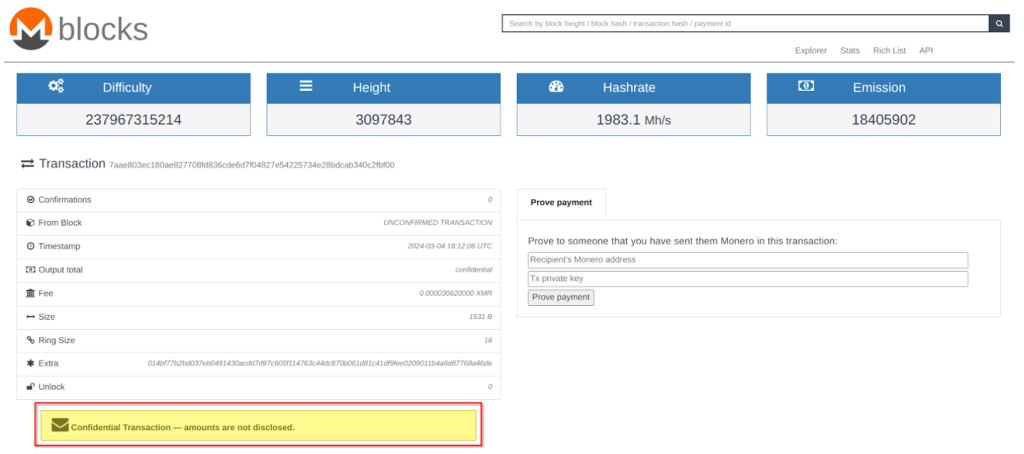
Some popular privacy coins include the following.
- Monero (XMR)
- Zcash (ZEC)
- Dash (DASH)
- Oasis Network (ROSE)
- Decred (DCR)
In 2020, the IRS published a request for information (RFI) encouraging third parties to help the agency with efforts in tracking transactions for Monero, Dash, and several other privacy-based crypto coins, chains, and sidechains.
Gaming Coins
Web3 gaming continues to gain popularity, with gaming coins at the center of the excitement. So, what is a gaming altcoin? A gaming altcoin typically falls into one of two categories.
Tokens like SAND, used by The Sandbox, provide an in-game currency useful for buying game assets like NFTs or transacting with other players. Other coins represent the blockchains used by web3 games.
For example, the Immutable X (IMX) token currently has a market capitalization of more than $4.3 billion.

Some popular gaming coins to consider include the following.
- Immutable X (IMX)
- Multiverse X (EGLD)
- Beam (BEAM)
- The Sandbox (SAND)
- Axie Infinity (AXS)
- Gala (GALA)
- Decentraland (MANA)
In many cases, gaming tokens perform double duty as governance tokens, allowing token holders to vote on proposals for the protocol or chain.
Utility Tokens
Utility tokens cover a broad range of applications but serve a specific purpose within a particular protocol or blockchain. For example, ETH is a utility token used to pay for the computing power used by transactions on the Ethereum blockchain. On a smaller scale, the Basic Attention Token (BAT) is used to tip creators, posters, or commenters through the Brave browser.
Other examples of utility tokens include Uniswap (UNI) and Abitrum (ARB), both of which serve as governance tokens that allow token holders to vote on proposals. A recent proposal to let UNI token holders share in revenue from the Uniswap decentralized exchange caused the UNI token value to surge 50% within 24 hours.
Several top utility tokens include the following.
- Fantom (FTM): Native token for the Fantom blockchain network
- Polygon (MATIC): Used to govern the Polgon network and pay network fees
- Aave (AAVE): Used in governance and staking to provide an insurance fund for Aave protocol
- Radiant (RDNT): Provides governance and access to protocol revenue
- Injective (INJ): Powers the finance-focused Injective blockchain network
Decentralized Finance (DeFi) Tokens
DeFi tokens refer to tokens used in decentralized finance applications, ranging from lending and borrowing protocols and decentralized exchanges. However, you’ll find some overlap with utility tokens, the distinction being that DeFi tokens focus on a specific category of utility (DeFi). DeFi tokens also span a range of use cases, including staking tokens, governance tokens, and utility tokens.
For example, Lido Staked Ether (STETH), a DeFi token, recently broke into the top ten cryptocurrencies. The Lido protocol uses smart contracts to exchange staked ETH, which must be unstaked to use or sell, for liquid tokens that can be sold, spent, or used as collateral.
LINK, the token for Chainlink, offers another example. Chainlink provides DeFi protocols with data from the outside world, such as current prices. DeFi protocols like Aave depend on this data for use in smart contracts.
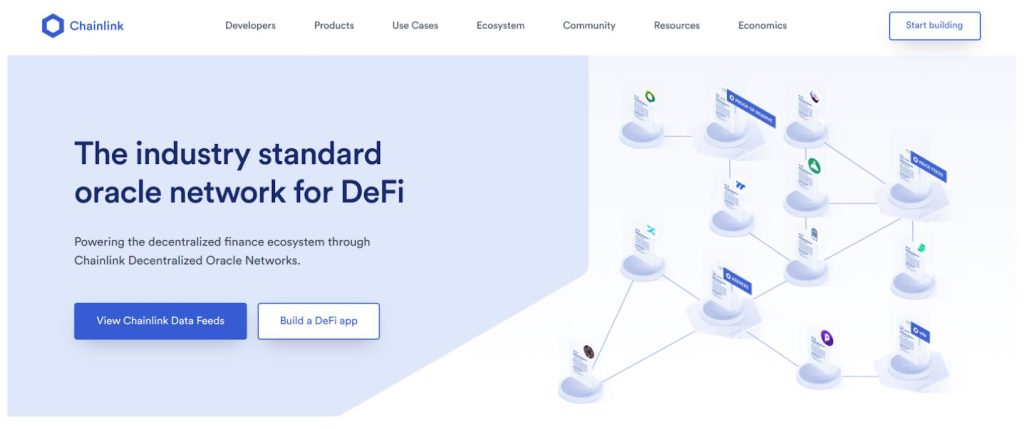
In Aave’s case, pricing data allows the Aave protocol to manage loan-to-value (LTV) for crypto-backed loans.
Meme Coins
Meme coins are the class clowns of the crypto world — fun and popular but not always the best long-term bet. Most follow a theme, such as the Shiba Inu fandom of Dogecoin or the notably chill PEPE, named after Pepe the Frog. The Solana-based BONK token and Shiba Inu provide yet more examples of dog-based meme coins.
But the irreverence of meme coins doesn’t mean these coins and tokens don’t have staying power or can’t provide serious returns. Scores of Dogecoin millionaires beg to differ.
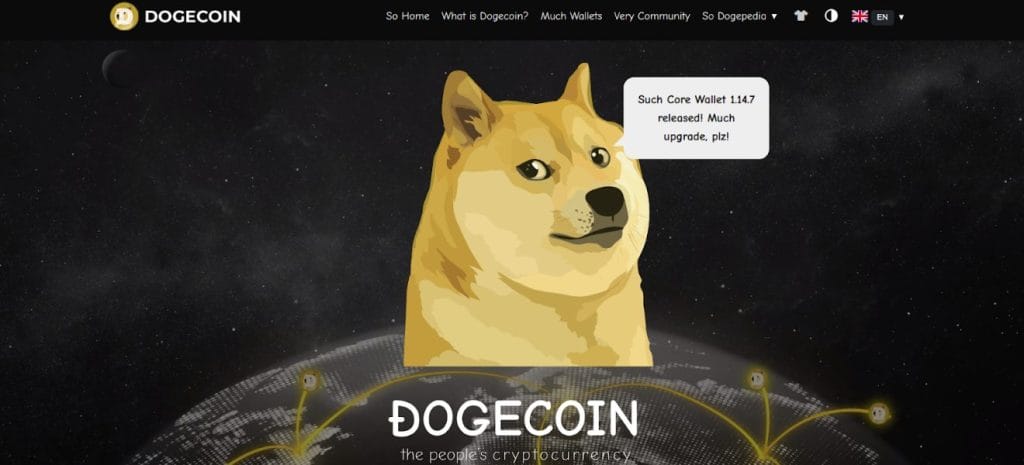
Shiba Inu, a token inspired by the Dogecoin mascot, went from a popular meme coin trading for a fraction of a penny to building the Shibarium blockchain, complete with its own tokens — although SHIB still trades for a fraction of a penny.
Meme coins are capable of explosive price movements, especially during altcoin season. As of this writing, SHIB holders enjoyed a 221% price increase over the past seven days as the value of each SHIB rocketed from $0.0000159 to $0.000034. Timing can be much more important with meme coins, however. To use SHIB as an example again, after reaching an all-time high of $0.00008616 in 2022, SHIB fell as low as $0.000006754 in 2023, losing 80% of its value.
What are the Biggest Altcoins?
If you’re wondering how to buy altcoins in 2024, the largest altcoins by market cap can provide a starting point. These crypto assets have a worldwide trading base, allowing you to trade in and out as needed. Many have also achieved their measured-in-billions market caps by providing a solid use case.
- Ethereum (ETH)
- BNB (BNB)
- Solana (SOL)
- Ripple (XRP)
- Lido (STETH)
- Cardano (ADA)
- Dogecoin (DOGE)
- Shiba Inu (SHIB)
- Avalanche (AVAX)
- Polkadot (DOT)
- Tron (TRX)
The best altcoins offer proven track records and exceptional liquidity due to a worldwide trader base. However, it may be less likely that the stellar gains that drove these cryptos to the top will continue at the same rate. Like Bitcoin, price growth may slow.
Should You Invest in Altcoins?
Bitcoin may continue to rise. However, select altcoins may provide greater returns over time. Altcoins also offer a way to diversify your crypto portfolio and enjoy gains at staggered time frames. Altcoins often see price action at different times than Bitcoin, giving rise to the term altcoin season, which refers to when leading altcoins outperform Bitcoin in percentage gains.
Diversifying Your Portfolio
Because altcoins may see price surges at different times than Bitcoin, dedicating part of your portfolio to altcoins can help you see more frequent growth in your portfolio. Additionally, news can affect cryptocurrency prices at different times. For example, a recent 50% gain within 24 hours for UNI far outperformed Bitcoin and most other cryptocurrencies.
High Growth Potential
Bitcoin is expected to continue its gains, although future returns may not mirror the early days when Bitcoin rose from pennies to over $1,000, later reaching nearly $70,000. Smaller yet promising altcoins might still offer a chance to mint money if you choose well when buying altcoins.
Special Use Cases
Some cryptocurrencies solve a problem. Ethereum, for example, allows decentralized finance applications to flourish. However, Ethereum is slower and costlier than many blockchains, creating opportunities for networks like Solana. Similarly, Bitcoin, with its 10-minute block times, is notably slow and costly. This could make room for fast and inexpensive peer-to-peer networks like Kaspa to find a niche in smaller payment applications.
Conclusion
Altcoins offer growth opportunities that may be less likely with Bitcoin and provide a way to diversify your crypto portfolio. However, it’s important to study the use case of each as well as its adoption rate and potential headwinds before making a long-term investment.
The price volatility found with altcoins also creates trading opportunities, particularly for meme coins, which can move 20% or more in a trading day.
FAQs
What is an altcoin?
An altcoin is any cryptocurrency besides Bitcoin.
What are the top 5 altcoins?
The top 5 altcoins by market capitalization are Ethereum (ETH), BNB, Solana (SOL), Ripple (XRP), and Cardano (ADA). However, this list omits stablecoins, which are pegged to the value of another currency, such as the US dollar. The leading stablecoins are Tether (USDT) and US Dollar Coin (USDC).
Is Solana an altcoin?
Yes, Solana is an altcoin. By the most common altcoin meaning, all cryptocurrencies besides Bitcoin are altcoins.
Is Ethereum an altcoin?
Yes, Ethereum is an altcoin. By the most common altcoin meaning, all cryptocurrencies besides Bitcoin are altcoins.
What is the point of altcoins?
Ever asked yourself the question ‘what are altcoins used for?’ The use cases for altcoins range from utility tokens that perform a specific function on a blockchain or protocol to meme coins, many of which were just made for fun. In many cases, altcoins can provide higher returns compared to Bitcoin. However, the risk may also increase.
What is the difference between Bitcoin and altcoins?
Bitcoin was the first cryptocurrency to achieve meaningful use. Other cryptocurrencies, such as Ethereum, Bitcoin Cash, or Solana, are considered to be altcoins or alternatives to Bitcoin.
References
About the Author
Eric Huffman’s background includes a decade plus in business management as well as personal finance industry experience in insurance and lending. A strong understanding of consumer finance combined with a consumer advocate stance brought Eric to the crypto industry, where he writes articles and guides aimed at making crypto easier to understand.
Altcoins
On-chain data confirms whales are preparing for altcoin surge with increased buy orders
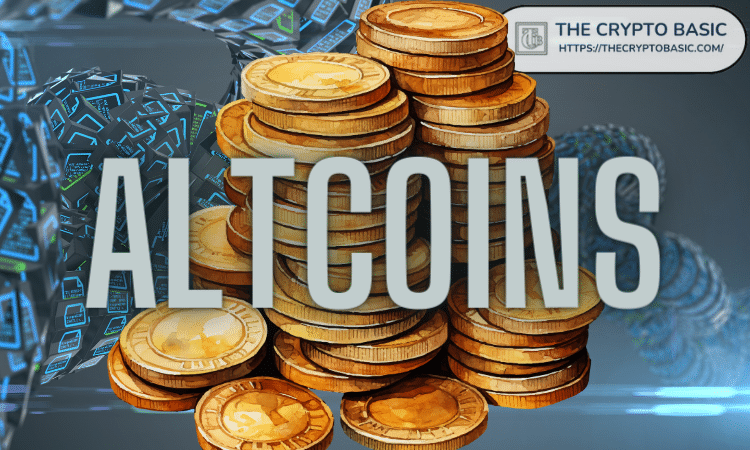
Ki Young Ju, CEO of analytics platform CryptoQuant, believes whales are preparing for an upcoming surge in altcoins.
In a recent revelation about X, Ju underlines that the volume of limit buy orders for altcoins, excluding Bitcoin and Ethereum, is increasing. This pattern suggests the formation of substantial buy walls, highlighting significant buying pressure from large-scale investors.
Ju’s chart identifies two main phases in limit order volume for altcoins: the limit sell phase and the limit buy phase. The limit sell phase saw a notable increase in cumulative sell orders in 2022, demonstrating strong selling pressure from whales and other market participants. This phase coincided with a period of falling altcoin prices due to unfavorable market conditions.

Then, the limit buying phase began, marked by a significant increase in cumulative buy orders. This indicates a period of strategic accumulation where whales establish substantial buy walls.
According to Ju, the increase in buying volume suggests confidence in the future conditions of the altcoin market. This buying pressure creates strong support levels, indicating that whales are preparing for a positive change in the market.
Buying pressure on specific altcoins
Ju also provided a heatmap of the 1-year normalized cumulative buy/sell volume difference for various altcoins, showing the buying and selling pressure over time. Solana (SOL) has seen alternating strong buying and selling phases, with recent activity showing increased buying interest. Cosmos (ATOM) and Polygon (MATIC) have also shown increased buying pressure despite mixed activity trends.
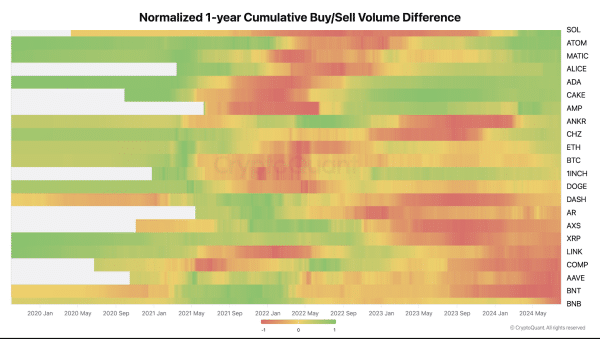

Cardano (ADA) and PancakeSwap (CAKE) have shown balanced buying and selling phases, with recent trends proving increased buying pressure. Coins like AMP and ANKR have also demonstrated increased buying activity. The heatmap reveals that most altcoins are seeing increased buying pressure as whales and large investors accumulate altcoins in anticipation of a rally.
Meanwhile, coins experiencing selling pressure, as indicated by the predominantly red areas on the heatmap, include DOGE, DASH, AXS, XRP, COMP, and AAVE, BNT.
Bitcoin whales are also buying
It is important to note that while whales are accumulating altcoins, Bitcoin whales are also active. Crypto Basic note an increase in buyer activity on Binance, which aligns with an increase in the buy/sell ratio of takers and whale movements. Analyst Ali Martinez highlighted the ratio fluctuations from below 0.8 to above 1.7 between July 27 and 31. Ratios above 1.0 indicate aggressive buying, often preceding price rallies.
From July 27 to July 28, the ratio remained mostly above 1.0, corresponding to the rise in Bitcoin price from around $66,500 to over $67,000. A spike to around 1.5 led to a sharp increase in price to around $68,500. However, on July 30 and 31, the ratio fell below 1.0 several times, corresponding to a drop in price to around $66,000, before a final spike to 1.7 indicated another slight increase in price.
Disclaimer: This content is informational and should not be considered financial advice. The opinions expressed in this article may include the personal opinions of the author and do not reflect the opinion of The Crypto Basic. Readers are encouraged to conduct thorough research before making any investment decisions. The Crypto Basic is not responsible for any financial losses.
-Advertisement-
Altcoins
How to buy a car with cryptocurrency

The automotive and cryptocurrency industries have been merging for the past few years. As digital currencies become more prevalent in everyday activities, it is increasingly likely that they will be integrated into everyday transactions, such as when buying a car. The article unpacks the dynamic relationship between cryptocurrency and car buying today, explaining how digital currencies can be used to buy a vehicle today. It includes elements such as some of the benefits and challenges of buying a car using cryptocurrency and what lies ahead in the future.
Understanding Cryptocurrency Payments in the Automotive Industry
Cryptocurrency is not just a digital asset; it represents a revolutionary approach to decentralized financial transactions. The automotive industry, known for its adaptability, has begun to accept cryptocurrencies as a legitimate form of payment in various markets. For example, luxury car dealerships and online platforms offering car auctions in new york increasingly allow buyers to purchase cars using cryptocurrencies.
There are several factors that determine how much cryptocurrency you need to buy a car. Among them, the most influential will be the current value of the cryptocurrency you want to use at that moment. Unlike traditional currencies, cryptocurrencies can be very volatile. Their value can change drastically in an instant, which affects the amount needed at the time of purchase.
Benefits of Buying Cars with Cryptocurrency
Buying cars with cryptocurrencies offers several advantages:
– Reduced transaction fees: Cryptocurrencies can reduce the fees involved in large financial transactions typical of car purchases.
– Enhanced Privacy: Buyers who value their privacy can benefit from anonymity through blockchain-based transactions.
– Speed and convenience: transactions are faster than those carried out by banks, especially when the operation has an international scope.
Challenges and considerations
Although the benefits are compelling, several challenges must be considered:
– Volatility: At one moment, the price of any cryptocurrency can collapse, or the next minute it can skyrocket, and the price needed to buy a car can double or triple from one day to the next.
– Limited acceptance: Not all dealers accept cryptocurrency, which in turn may limit its use for making purchases.
– Tax implications: This may create different tax implications on purchases via cryptocurrency, depending on your jurisdiction.
Practical steps to buy a car with cryptocurrency
If you want to use cryptocurrency to buy a car, follow these steps:
- Ensure Acceptance: Check if the dealer or auction accepts the use of cryptocurrency.
- Check the conversion rate: You need to know how much your cryptocurrency is currently trading at compared to the price of the car in fiat currency.
- Secure your funds Make sure your digital wallet is secure and funded.
- Know the terms: Be informed and be clear about return policies as well as any additional fees incurred.
- Complete the transaction: Continue the payment via the digital wallet.
Future prospects
There is a good chance that many car dealerships will start accepting digital currencies, especially when blockchain technology pushes the boundaries and cryptocurrencies become stable. This trend is expected to be propelled forward due to the increasing demand for transparency, security, and efficiency in transactions.
Conclusion
The potential for cryptocurrencies to have a real impact on the car buying process is enormous. Of course, there are a few issues that emerge when considering the current market, including volatility and limited acceptance. However, the benefits of using digital currency to execute such transactions can easily outweigh the drawbacks for many buyers. As both sectors continue to grow, buying cars with cryptocurrencies shows a promising future and therefore creates a more connected and developed technological automotive market.
This means that buying a car, whether in cryptocurrency or in another form, is not just about following technological trends; it is rather about enjoying greater freedom and efficiency in financial transactions. Indeed, the closer the digital and automotive worlds become, the more buyers should expect simpler, much safer and also very innovative ways of purchasing.
Disclaimer: This press release article is provided by the client. The client is solely responsible for the content, quality, accuracy, products, advertising or other materials on this page. Readers should conduct their own research before taking any action related to the material available on this page. Crypto Basic is not responsible for the accuracy of the information or for any damage or loss caused or alleged to be caused by the use of or reliance on any content, goods or services mentioned in this press release article.
Please note that The Crypto Basic does not endorse or support any content or products on this page. We strongly advise readers to conduct their own research before acting on the information presented here and to take full responsibility for their decisions. This article should not be considered investment advice.
Disclaimer: This content is informational and should not be considered financial advice. The opinions expressed in this article may include the personal opinions of the author and do not reflect the opinion of The Crypto Basic. Readers are encouraged to conduct thorough research before making any investment decisions. The Crypto Basic is not responsible for any financial losses.
-Advertisement-
Altcoins
Introducing Bit-Chess. The World’s First Fully Decentralized Chess Platform
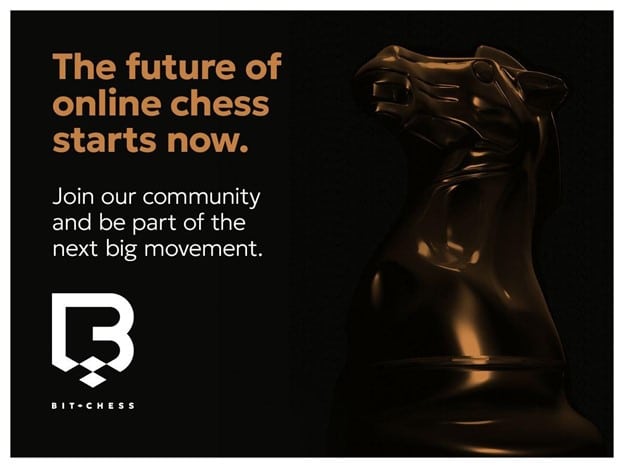
Bit-Chess announces the pre-sale of the world’s first fully decentralized chess platform, combining the classic strategy game with the innovative world of cryptocurrencies. This platform will change the way millions of people interact with chess online, providing a digital space where players can enjoy their favorite game, compete in global tournaments, and earn rewards through play-to-win mechanics.
Bit-Chess is an entry point for both experienced players and newcomers to the crypto space. It provides tools and guides to help even inexperienced users get started with cryptocurrencies by creating in-game wallets upon first login. It is the first chess game to use Web3 technology, and all participants can earn money while playing.
During the presale, 500 of the 2,000 special NFTs will be available, with the rest distributed through tournaments and auctions. Unless NFT holders agree otherwise, the team will manage 1,500 NFTs, preserving their rarity with a cap of 2,000 pieces. More information about the NFT marketplace will be released after the token’s official launch.
The platform aims to become the world’s leading online chess center, offering:
Play to win features.
Global tournaments with cash or NFT prizes.
Player versus player challenges
Special NFTs and more
Bit-Chess invites players from all over the world to join its unique ecosystem, where playing chess is more than just entertainment: it’s an opportunity to earn and learn in the world of crypto.
For more information and to participate in the presale, Visit the Bit-Chess website.
Disclaimer: This press release article is provided by the client. The client is solely responsible for the content, quality, accuracy, products, advertising or other materials on this page. Readers should conduct their own research before taking any action related to the material available on this page. The Crypto Basic is not responsible for the accuracy of the information or for any damage or loss caused or alleged to be caused by the use of or reliance on any content, goods or services mentioned in this press release article.
Please note that The Crypto Basic does not endorse or support any content or products on this page. We strongly advise readers to conduct their own research before acting on the information presented here and to take full responsibility for their decisions. This article should not be considered investment advice.
Disclaimer: This content is informational and should not be considered financial advice. The opinions expressed in this article may include the personal opinions of the author and do not reflect the opinion of The Crypto Basic. Readers are encouraged to conduct thorough research before making any investment decisions. The Crypto Basic is not responsible for any financial losses.
-Advertisement-
Altcoins
Here’s the price of XRP if it handles 10% of SWIFT transactions
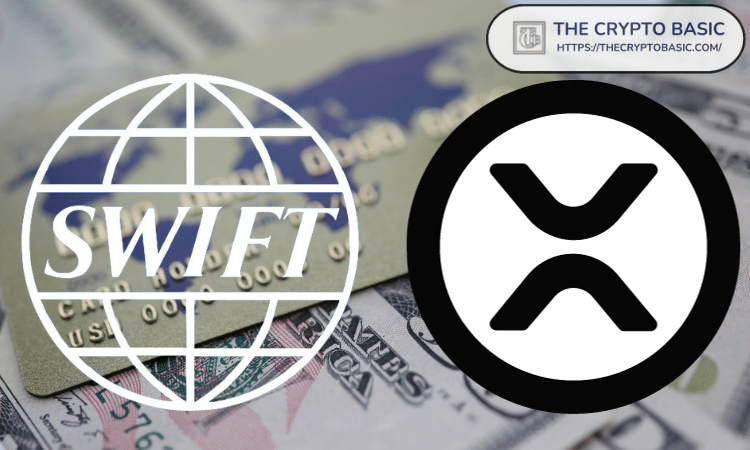
Popular community figure Amélie predicts a massive increase in the price of XRP if its underlying network, XRPL, is used to process 10% of all SWIFT transactions.
In a recent article on X, Amélie took on SWIFT (Society for Worldwide Interbank Financial Telecommunication), suggesting that XRP is a better alternative for cross-border settlements.
Ripple claims Swift is not fast enough
In a recent post on X, the community personality called attention to a Ripple ad claiming that “Swift isn’t fast enough.” The remark was a subtle criticism of Ripple’s transaction processing speeds for the global financial messaging giant.
Interestingly, Ripple has recommended financial institutions to adopt its solution to instantly transfer value across borders.
Amelie compared the processing speed of SWIFT and XRP transactions. According to community figures, cross-border transactions on SWIFT typically take between three and five business days. Conversely, Amelie claimed that XRP transactions can be completed in four seconds.
After the analysis, Amélie echoed Ripple’s sentiments, pointing out that SWIFT is not fast enough compared to XRP.
XRP to Surpass $1,000 if it handles 10% of SWIFT transactions
Therefore, enthusiasts have speculated that all SWIFT transactions will eventually be processed through the XRP Ledger (XRPL), the underlying blockchain of the XRP token.
Interestingly, she suggested that the price of XRP could surpass $1,000 per token if 10% of all SWIFT network transactions were processed through XRPL. However, Amelie did not provide details on how XRP could reach this milestone.
SWIFT VS XRP:
SWIFT: 3 to 5 business days
XRP: Cross-border payments in 4 seconds
SWIFT IS NOT FAST ENOUGH!
I think all Swift transactions will soon be processed via #XRPL 💵💱💴
10% of SWIFT network = $1,000+ per XRP! pic.twitter.com/Jt6mumQHfb
— 𝓐𝓶𝓮𝓵𝓲𝓮 (@_Crypto_Barbie) July 20, 2024
Can XRP replace SWIFT?
Several cryptocurrency enthusiasts have compared XRP to SWIFT in recent years. In particular, the famous crypto asset manager Grayscale characterized XRP as an alternative to SWIFT. Notably, some users have taken this comparison further by projecting that XRP could eventually replace SWIFT because of its inefficiencies, including slow transaction processing.
The potential replacement of XRP with an established system like SWIFT would require more than just community support. Factors such as the final resolution of the SEC lawsuit, increased institutional adoption of XRP, and large-scale commercial partnerships leveraging Ripple’s payment solution could play a critical role in XRP’s potential replacement or integration with SWIFT.
Disclaimer: This content is informational and should not be considered financial advice. The opinions expressed in this article may include the personal opinions of the author and do not reflect the opinion of The Crypto Basic. Readers are encouraged to conduct thorough research before making any investment decisions. The Crypto Basic is not responsible for any financial losses.
-Advertisement-
-
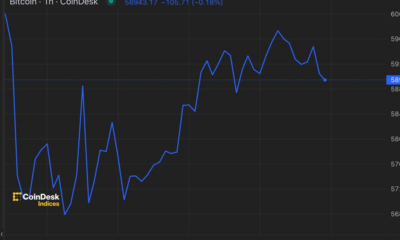
 News1 year ago
News1 year agoBitcoin (BTC) price recovery faces test on non-farm payrolls
-

 Bitcoin12 months ago
Bitcoin12 months ago1 Top Cryptocurrency That Could Surge Over 4,300%, According to This Wall Street Firm
-

 Altcoins12 months ago
Altcoins12 months agoOn-chain data confirms whales are preparing for altcoin surge with increased buy orders
-

 Bitcoin12 months ago
Bitcoin12 months agoThe US government may start accumulating Bitcoin, but how and why?
-
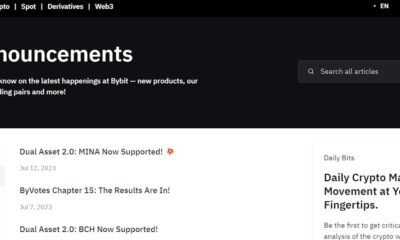
 News1 year ago
News1 year agoNew ByBit Listings for 2024: 10 Potential Listings
-
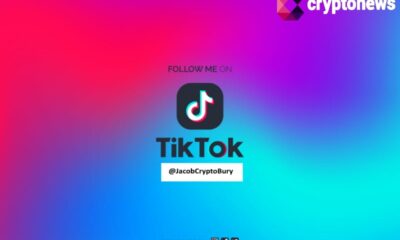
 News1 year ago
News1 year ago11 Best Crypto TikTok Accounts & Influencers in 2024
-
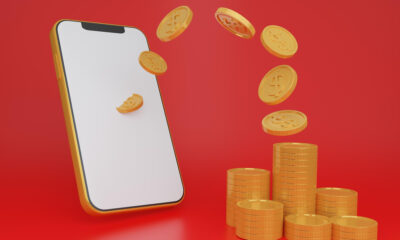
 Altcoins1 year ago
Altcoins1 year agoMarket giants have taken action!
-

 News1 year ago
News1 year ago11 Best Shitcoins to Buy in 2024: The Full List
-

 Ethereum1 year ago
Ethereum1 year agoTop Meme Coins by Market Capitalization in 2024
-
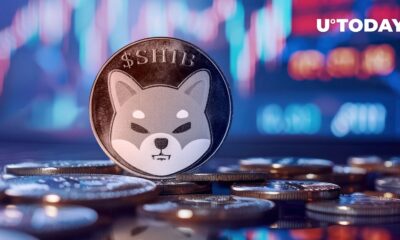
 News1 year ago
News1 year ago1.08 Trillion SHIBs Dumped on Major Crypto Exchange, What’s Going On?
-

 News1 year ago
News1 year ago19 Best Crypto Games to Play in 2024
-
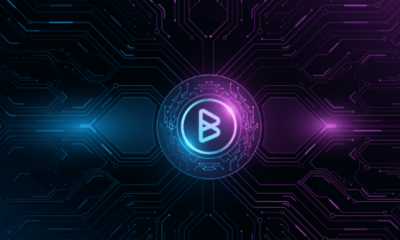
 Altcoins1 year ago
Altcoins1 year agoAltcoin Recommended by Crypto Expert for Today’s Portfolio






